Are you launching geofencing campaigns but struggling to measure their effectiveness beyond basic impression counts and wondering which metrics actually predict success and drive meaningful business outcomes? You’ve discovered the exact guidance you need to master this challenge!
Geofencing campaigns represent one of the most sophisticated forms of location-based marketing, but their success depends entirely on tracking and optimizing the right performance indicators that reveal how effectively your virtual boundaries translate into real-world customer actions. Unlike traditional digital advertising that relies primarily on clicks and impressions, geofencing requires a nuanced understanding of location accuracy, behavioral triggers, timing optimization, and cross-channel attribution that connects physical presence to digital engagement and ultimately to business results. The marketers who achieve breakthrough results with geofencing campaigns focus obsessively on precision metrics that reveal not just who entered their virtual perimeters, but how those interactions drive the customer behaviors and business outcomes that matter most to their bottom line.
Location Accuracy and Boundary Performance Metrics
The foundation of effective geofencing campaigns lies in measuring location precision and boundary effectiveness, which determines whether your campaigns reach the right people at the right places with sufficient accuracy to drive meaningful engagement. Location accuracy metrics include GPS precision ratings, which measure how closely your geofencing technology can pinpoint user locations, and boundary breach confidence scores that indicate the reliability of entry and exit detection within your defined geographical areas.
Dwell time analysis provides critical insights into how long users spend within your geofenced areas, revealing whether your locations generate sustained engagement or merely fleeting interactions. Users who spend extended time within your boundaries typically represent higher-value prospects who are actively engaging with your physical locations or competitors, making them prime targets for immediate promotional offers or competitive messaging. Conversely, brief dwell times might indicate users who are simply passing through, requiring different messaging strategies that capture attention quickly.
Frequency and recency metrics track how often users enter your geofenced areas and how recently they’ve visited, enabling sophisticated segmentation based on customer loyalty and engagement patterns. Regular visitors to your geofenced locations demonstrate strong affinity for your category or specific locations, while users who haven’t visited recently might respond to win-back campaigns or special incentives designed to reactivate their interest. These behavioral patterns enable personalized messaging that reflects each user’s actual relationship with your physical locations.
Engagement and Response Rate Optimization
Geofencing campaign success depends heavily on measuring how effectively location-based triggers drive user engagement across different channels and touchpoints. Click-through rates for geofenced audiences typically differ significantly from broad demographic targeting because location context creates relevance that can dramatically improve response rates when messaging aligns with user intent and immediate circumstances.
Attribution analysis becomes particularly complex in geofencing campaigns because users might receive location-triggered messages but convert through different channels or at different times. Store visit attribution tracks how many users who received geofenced messages subsequently visited physical locations, while cross-device attribution measures how location-based mobile interactions influence purchases through other devices or channels. Advanced attribution models account for the time delay between geofencing exposure and conversion, recognizing that location-based awareness might influence purchase decisions hours or days later.
Engagement timing analysis reveals optimal windows for delivering geofenced messages based on user behavior patterns within specific locations. Some locations generate highest engagement during morning commutes, while others peak during lunch hours or evening activities. Understanding these timing patterns enables message scheduling that maximizes relevance and response rates by reaching users when they’re most receptive to location-specific offers or information.
Competitive Intelligence and Market Share Metrics
Geofencing campaigns provide unique opportunities to measure competitive dynamics and market share through location-based behavioral analysis. Competitive conquest metrics track how effectively your campaigns attract users from competitor locations, measuring both the volume of competitor visitors you reach and their subsequent engagement with your brand or locations.
Cross-shopping analysis reveals user movement patterns between your locations and competitor sites, providing insights into customer loyalty, shopping behaviors, and market dynamics that inform both tactical campaign adjustments and strategic business decisions. Users who frequently visit both your locations and competitors represent particularly valuable audiences for retention campaigns, while users who visit competitors but not your locations indicate conquest opportunities.
Market penetration metrics measure what percentage of users within your target geographical areas receive and engage with your geofenced campaigns, helping optimize boundary sizing, message frequency, and audience targeting strategies. Low penetration rates might indicate overly restrictive boundaries or insufficient message frequency, while high penetration with low engagement suggests messaging or offer optimization opportunities.
Conversion Attribution and ROI Measurement
The ultimate measure of geofencing campaign success lies in connecting location-based interactions to measurable business outcomes through sophisticated attribution modeling that accounts for the complex customer journeys between physical and digital touchpoints. Store visit lift measures the incremental increase in physical location visits attributable to geofencing campaigns compared to control groups who didn’t receive location-based messaging.
Revenue attribution connects geofencing exposure to actual purchase behavior through customer matching, transaction tracking, and statistical modeling that isolates the impact of location-based marketing from other factors influencing customer behavior. Advanced attribution models account for assisted conversions where geofencing campaigns influence purchase decisions that complete through other channels or at different locations.
Long-term value metrics track how geofencing campaigns affect customer lifetime value, retention rates, and advocacy behaviors beyond immediate conversions. Location-based campaigns often generate sustained engagement that continues influencing customer behavior long after initial exposure, making long-term measurement essential for understanding true campaign value and optimizing future location-based marketing investments.
***
To get a #ProfessionalGradeMarketing team working for you, contact Ambient Array today.


